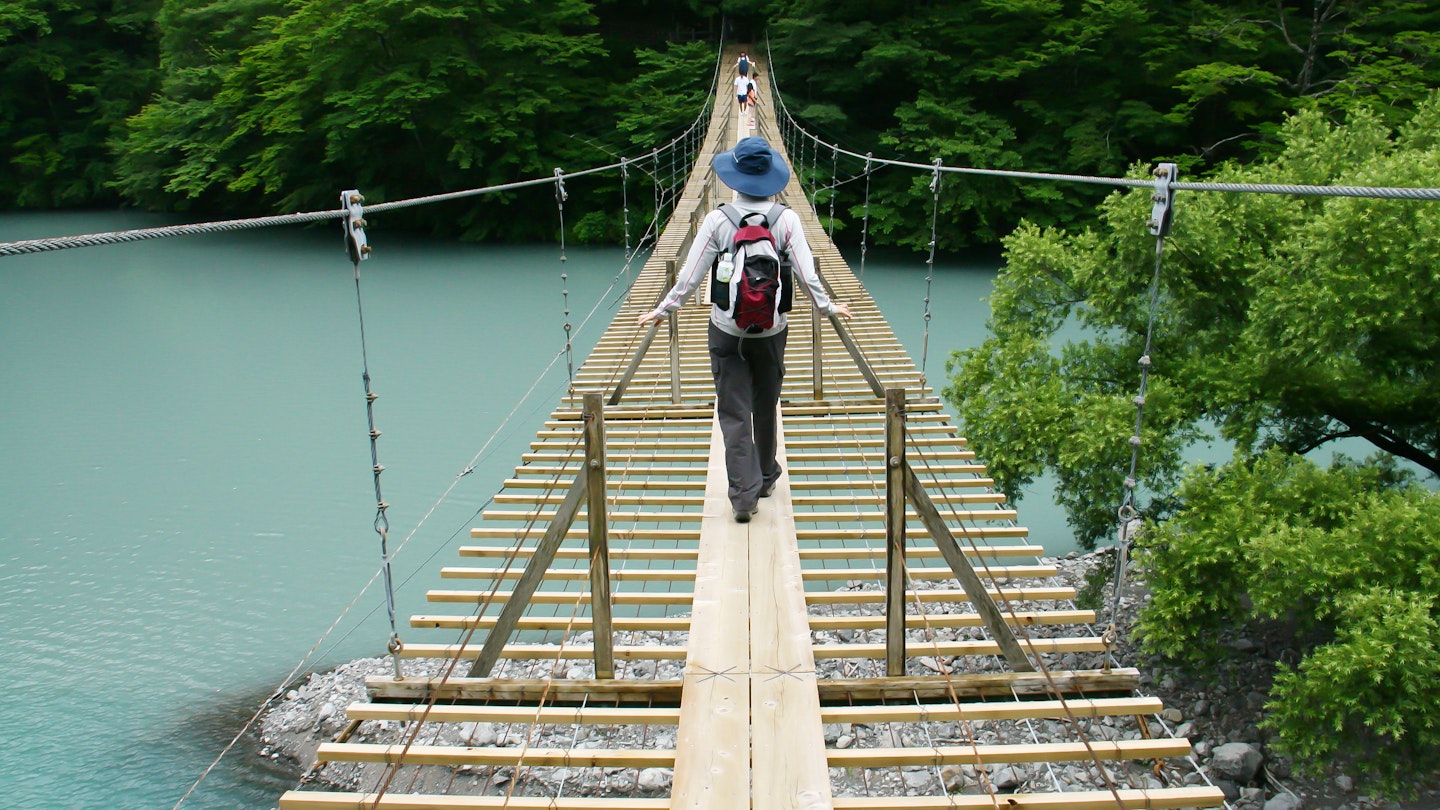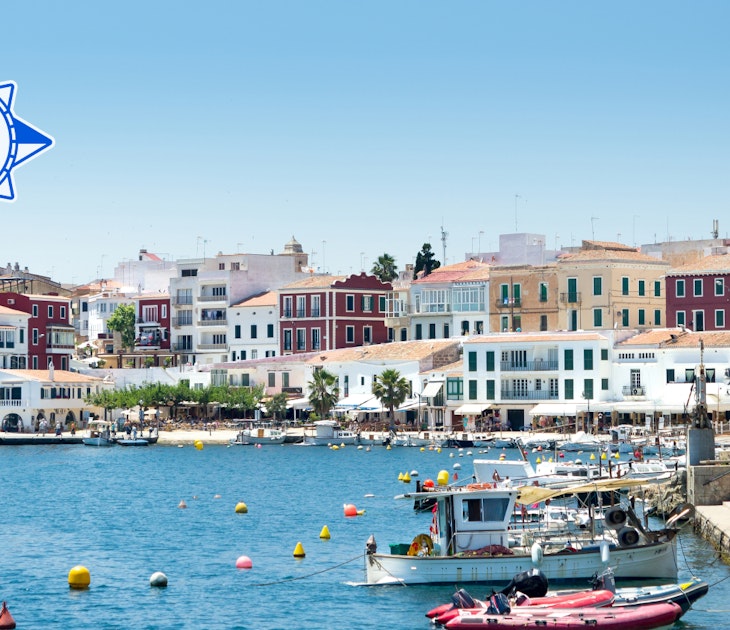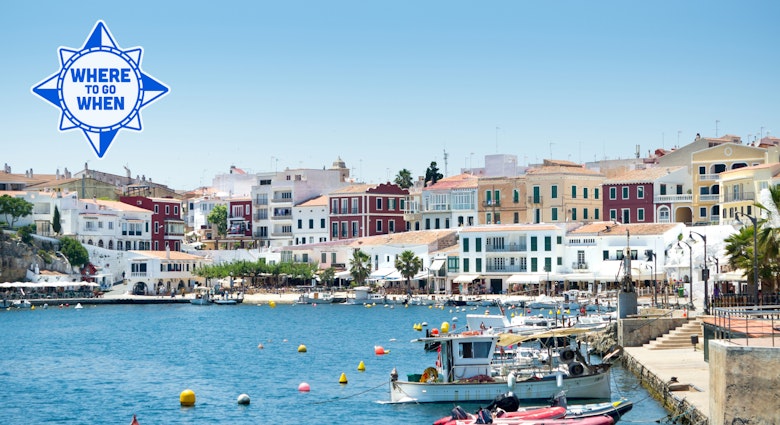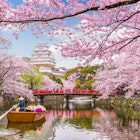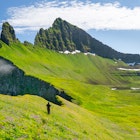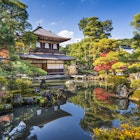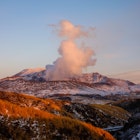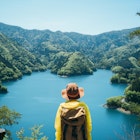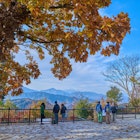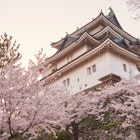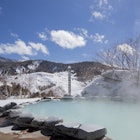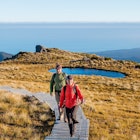About three-quarters of Japan is mountains, so it’s no surprise that hiking is a popular pursuit for locals and travelers alike. There are monumental peaks (hello Mt Fuji!) and gentle hills, sublime landscapes and historic trails.
Japan has its own rich hiking culture, too: stay with other hikers in one of the country’s many convivial mountain lodges, and, afterward, find a good onsen (hot spring bath) in which to soak. Trails in Japan are generally well-maintained (and will be closed if maintenance is required), and there’s public transportation to most popular trailheads.
Here are six of Japan's very best hikes, along with some top tips to help you along your way.
1. Mt Fuji
Best bucket list hike
15km (9.3 miles) round-trip, 10–12 hours, hard
Mt Fuji, at 3776m (12,388ft), is Japan’s tallest mountain. Hundreds of thousands of people climb Fuji-san every year, continuing a centuries-old tradition of pilgrimages up the sacred volcano. Many Japanese people feel they should climb it once in their lifetime. But only once – as the saying goes, it is a wise person who climbs Mt Fuji, but a fool who climbs it twice.
It’s not an easy hike – there are sections that require scrambling over boulders; nor a pretty one, as most of it happens above the tree line. And yet, the feeling of reaching the top? Magical. For many, the goal is to see goraikō (the rising sun) from the summit. This means climbing throughout the night (with headlamps) or staying halfway up the mountain in one of the simple huts that provide lodging, toilets, food, water and wi-fi.
Planning tip: There are four trails up the mountain but the Yoshida Trail is far and away the most popular. It’s the easiest to reach from Tokyo and has the most huts. Climbing season is from July 1 to September 10.
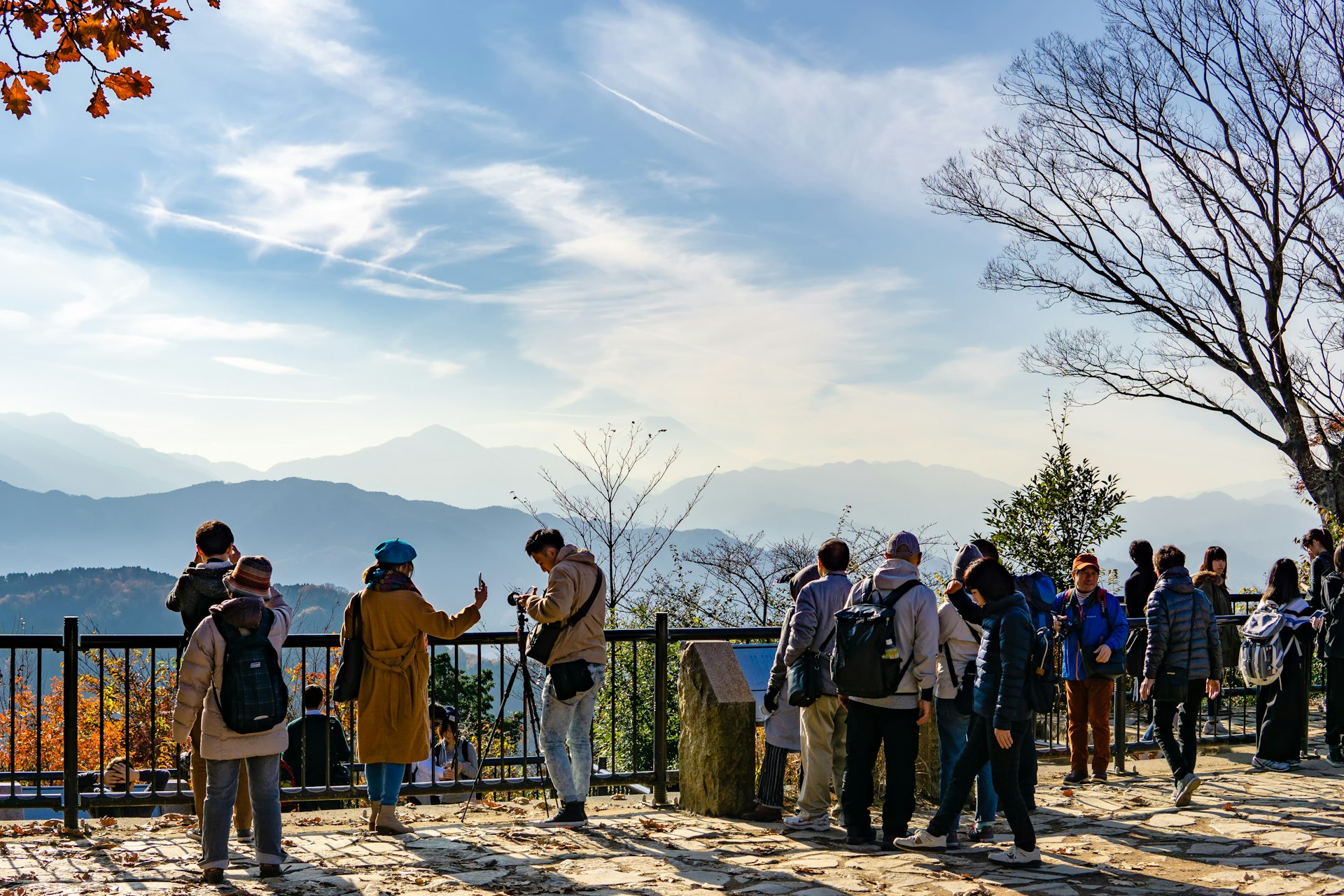
2. Mt Takao
Best urban hike from Tokyo
9km (5.6 miles) round-trip, 3–4 hours, easy
Mt Takao is Tokyo’s signature mountain – technically in the capital itself, though it’s an hour away from the nearest major urban hub by train. That train goes directly to the base of the mountain, and this ease of access means that Takao is extremely popular with everyone, from families with kids to active seniors.
There are six trails up to the top, which vary from rather woodsy to well-trodden, as well as attractions along the way, including a Buddhist temple established in the 8th century. From the summit (599m/1965ft), there are views in one direction back over Tokyo and, on a clear day, in the other of glorious Mt Fuji.
Local tip: Mt Takao is a year-round destination, doable in winter but particularly popular during the summer, when a beer garden opens on a terrace two-thirds of the way to the top, and in the fall, when the leaves change color.
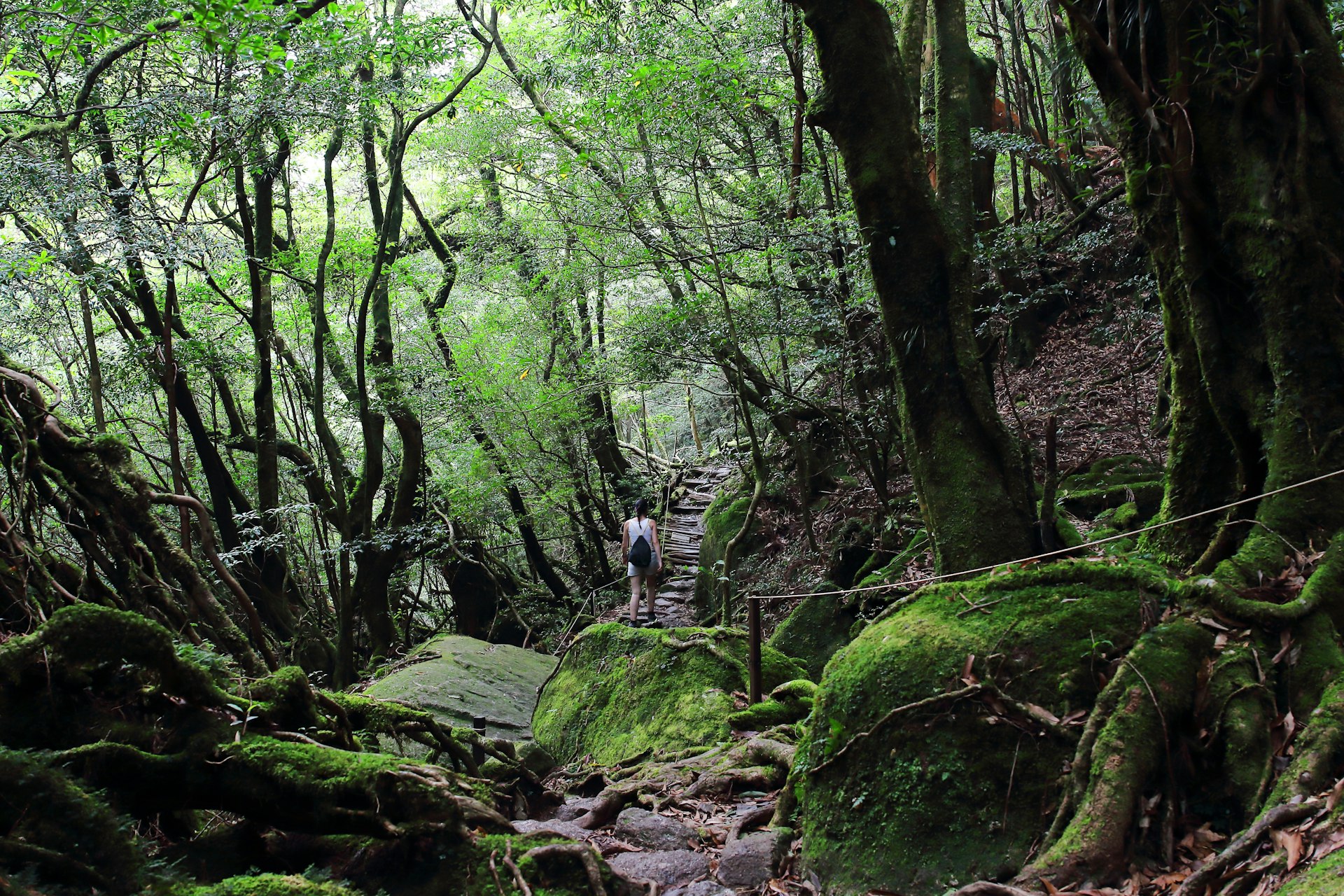
3. Shiratani Unsui Gorge (Yakushima)
Best for enchanting scenery
6km (3.7 miles) round-trip, 3–4 hours, easy
Yakushima, part of the Ōsumi Islands off the coast of Kyūshū, is one of the most enchanting places in all of Japan. It’s home to a variety of cedar, called yakusugi, that lives for well over 1000 years, growing massive, gnarly trunks and thick, muscular roots that reach like tentacles over the rocky forest floor.
Within Yakushima, the most spectacular spot is the Shiratani Unsui Gorge – said to have inspired legendary animator Miyazaki Hayao’s acclaimed 1997 film Princess Mononoke. A gentle, half-day trek wends through the gorge’s quietly spectacular moss forest, past ancient trees and to a lookout point at Taiko Rock.
Yakushima is the full package; in addition to hiking opportunities, there are beaches and hot springs.
4. Kumano Kodō (Takajiri-ōji to Kumano Hongū Taisha)
Best for pilgrim trails
37.8km (23.5 miles), 2 days, moderate
The Kumano Kodō is a network of pilgrim trails first charted some 1000 years ago by mountain ascetics called yamabushi. The trails, deep in Japan’s mountainous and remote Kii Peninsula, were originally used in religious training – acts of endurance meant to bring the practitioner closer to enlightenment.
Though the trails fell into disuse for centuries, they’ve since been restored, and the Kumano Kodō is now one of Japan’s most attractive hiking destinations. The main trail is called the Nakahechi, and it runs from Takajiri-ōji to the grand (and ancient) shrine, Kumano Hongū Taisha. Most modern-day pilgrims do the trek, which has moderate ups and downs, in two days, with a stop at an inn at one of the settlements around the halfway point.
Planning tip: A bus runs parallel to the route, so it is possible to hike smaller sections of the trail instead of the whole thing. Alternatively, you can opt to carry on another two days to the shrine, Kumano Nachi Taisha.
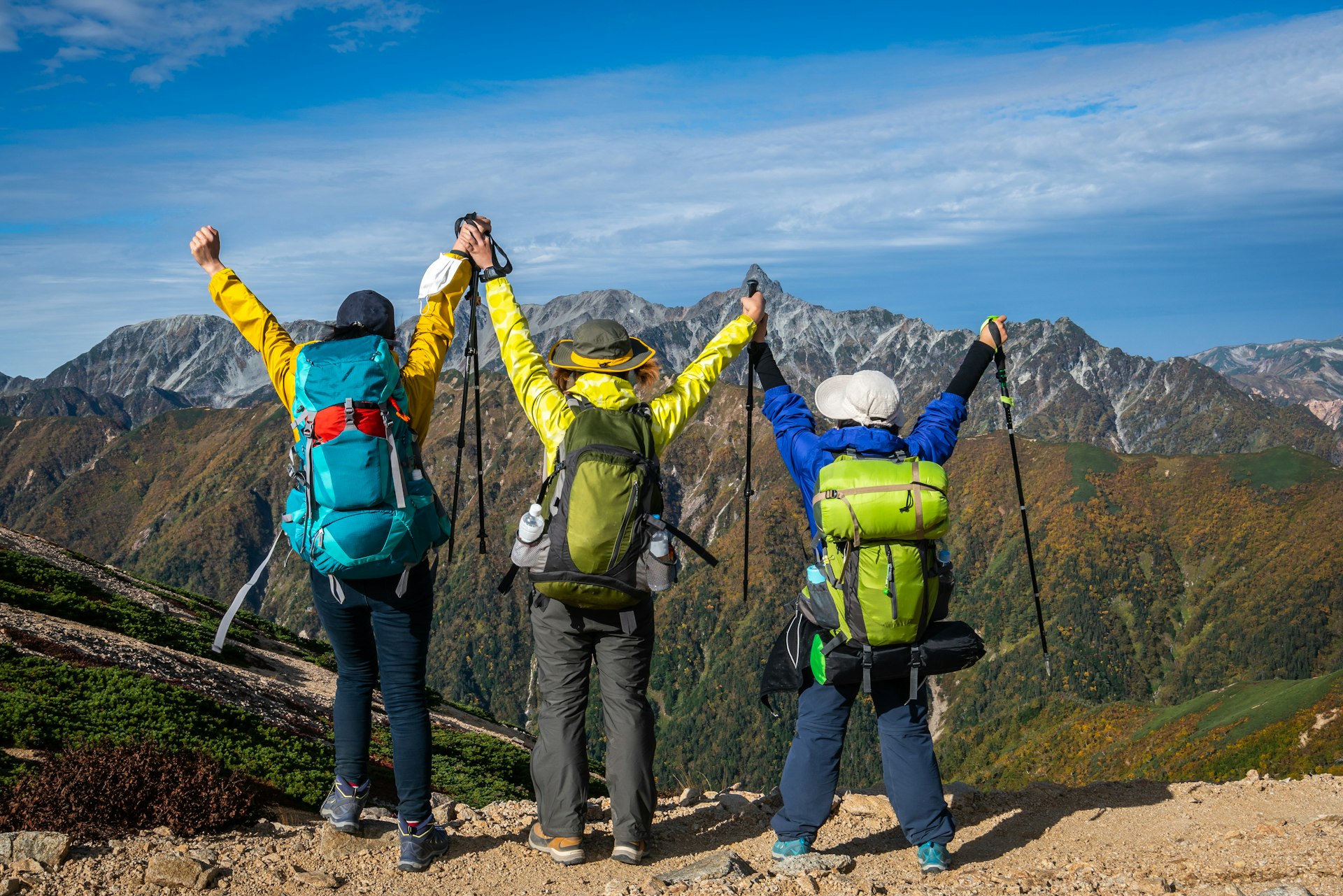
5. Kamikōchi–Hotaka-Yari Circuit
Best multi-day trek
34km/21 miles round-trip, 3 days, hard
Mt Yari – or Yari-ga-take – gets its name from the Japanese word for spear (yari), as the craggy peak rises to a dramatic point. It’s also called “Japan’s Matterhorn” due to its resemblance to the famous Swiss mountain. At 3180m (10,433ft), it’s Japan’s 5th-tallest mountain and part of the Northern Japan Alps – the country’s top outdoor destination.
There are a few different ways to get to the top, but the holy grail for serious hikers is the route known as the Kamikochi-Hotaka-Yari Circuit. This three-day trek begins in Kamikōchi, a highland river valley enveloped by soaring peaks. After reaching the summit of Mt Oku-Hotaka, the tallest mountain in the Alps at 3190m (10,466ft), hikers continue above the clouds via the infamous and honestly slightly terrifying Daikiretto, a (very) narrow ridgeline, to Mt Yari.
Local tip: If this all sounds like too much, Kamikōchi itself – one of the most breathtakingly scenic spots in the whole country – offers plenty of hiking opportunities for all levels.
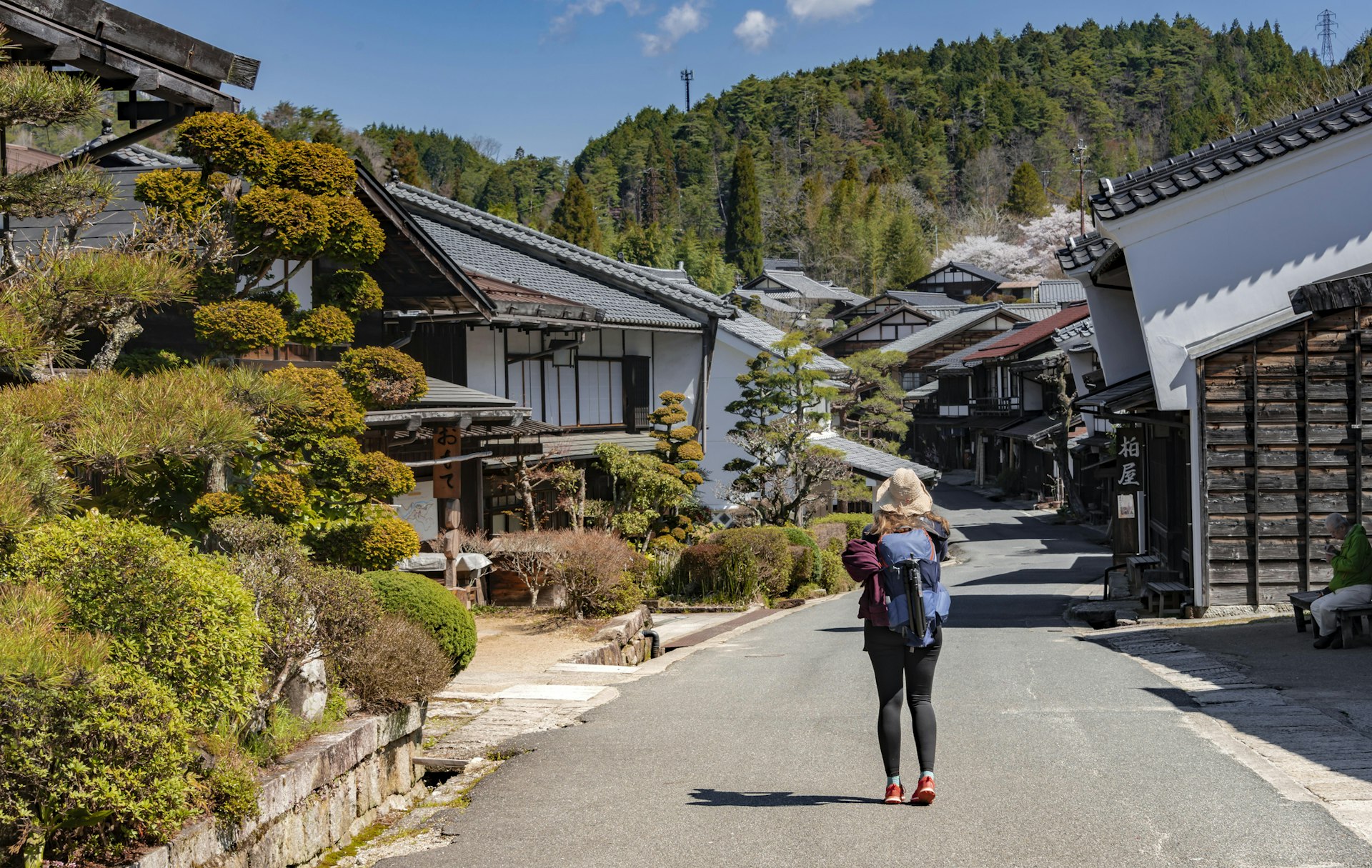
6. Magome to Tsumago
Best for history
7.8km (4.8 miles), 3–4 hours, easy
Magome and Tsumago are two towns on the Nakasendō, an old foot highway that connected Edo (present-day Tokyo) with the former imperial capital, Kyoto. During the Edo period (1603–1868), it was one of five roads designated for use by the shogun and other powerful feudal lords known as daimyō. Towns like Magome and Tsumago functioned like rest stations, providing amenities for the long retinues and messengers who traveled these routes.
Today, only a few sections of these roads remain passable, including the route between Magome and Tsumago. The path – part cobblestone, part packed earth – runs through the densely forested Kiso Valley, past small rural settlements and teahouses. Both towns, meanwhile, have well-preserved traditional structures – characterized by dark wood, latticework and slate roofs – from the Nakasendō’s heyday. As in times past, they house inns and noodle shops.
Planning tip: The Kiso Valley straddles the border of Nagano and Gifu prefectures and sits adjacent to the Central Japan Alps.
Top tips for hiking in Japan
- Camping in Japan is permitted only at designated campsites. Instead, many multi-day hikes require a night (or more) in a mountain lodge or hut, some of which also offer hot meals.
- Weather in Japan, especially in the mountains, can be unpredictable. Pay special attention to typhoon warnings between June and October.
- There are shops in Tokyo and also around popular hiking destinations (like Mt Fuji) that rent good-quality hiking gear, including hiking boots, if you’re not keen to lug around your own.
- Information centers and mountain lodges can provide trail maps plus details on closures, detours and other need-to-knows, like recent bear sightings.
- Although bear attacks are very rare, they can occur. Most hikers in Japan carry bells to help warn bears that they are approaching.
- Falling rocks can also cause deadly accidents. As such, some climbers attempting peaks like Mt Fuji or Mt Yari wear helmets for protection.

